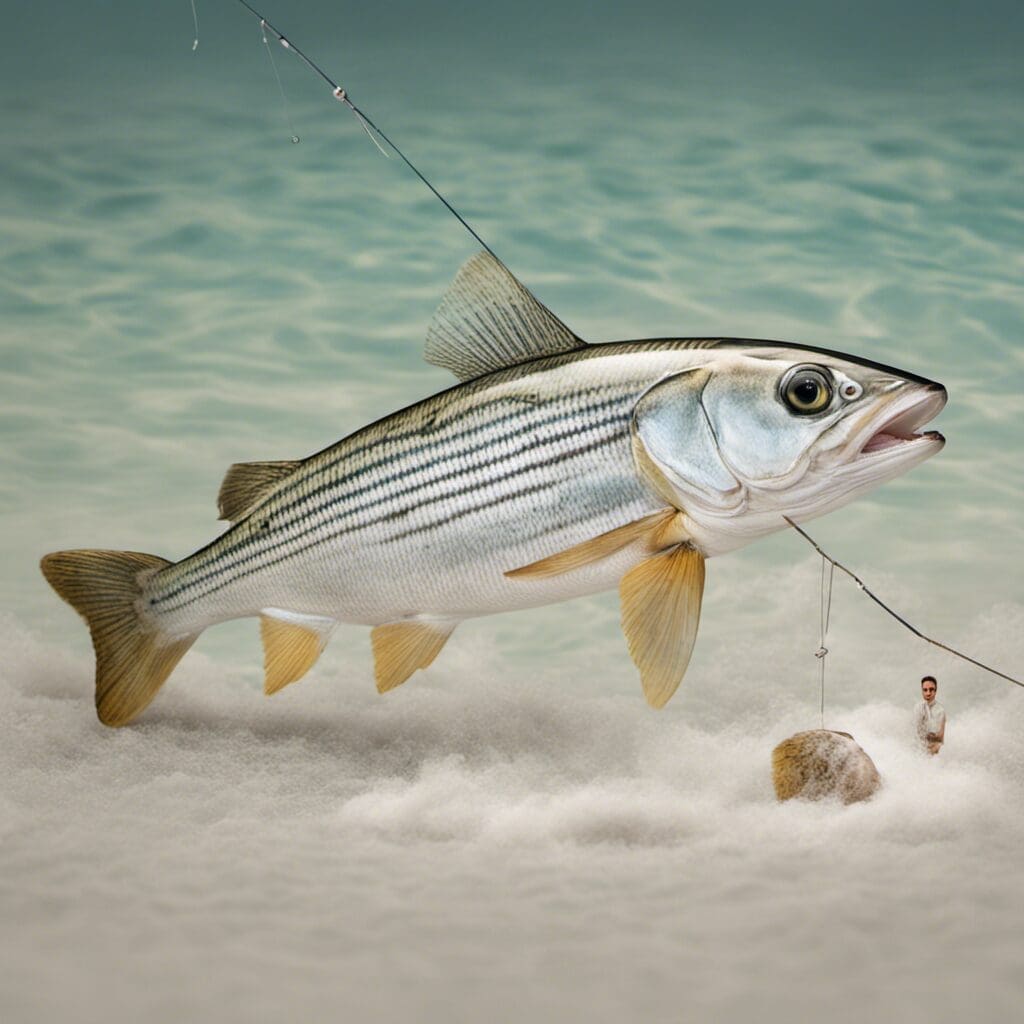Introduction
Commonly known as the Bonefish (Albula vulpes), this fascinating species belongs to the Albulidae family.
Conservation Status
The Bonefish is currently classified as Near Threatened according to the IUCN Red List. Conservation efforts are being made across various regions predominantly through habitat protection and regulation of fishing practices.
Statistics
| Statistic | Average | Range |
|---|---|---|
| Length | 20 inches | 50 cm – 105 cm |
| Weight | 6 lbs | 2 lbs - 19 lbs |
| Average Lifespan | 19 years | N/A |
Distribution
Bonefish have a broad distribution – from the west Atlantic, throughout the Caribbean and Gulf of Mexico, all the way to the east Atlantic. They do not generally carry out long-distance migrations, but may move locally due to temperature changes or spawning behavior.
Habitats
Bonefish prefers warm, tropical, and subtropical shallow waters. They can be found at a depth range of 0.5 to 15 meters and thrive in temperatures between 22°C to 30°C.
When and Where to See
Seasonal patterns are driven by water temperature, with Bonefish being most active when waters are warm. They are typically most visible in shallow waters during early morning and late afternoon hours.
Best Fishing Locations
- Florida Keys, Florida
- Andros Island, Bahamas
- Christmas Island, Kiribati
- Laccadive Islands, India
- Laguna Madre, Texas
- Ascension Bay, Mexico
- Hawaii, USA
- Abaco, Bahamas
- Ambergris Caye, Belize
- Exumas, Bahamas
Typically, Bonefish are found in shallow, sandy areas with plentiful seagrass, which provides a vital source of foraging opportunities.
How to Catch
Bonefish are typically caught by sight fishing using a fly rod or light spinning tackle. Top choices for bait include shrimp, crabs, and clams. The best times to catch bonefish are during incoming tides and during the warmer parts of the day.
Identification Guide
Bonefish are silver in color, with blue or greenish backs. They are distinguishable by their long, slender bodies and forked tails. With a pointed nose and upward-facing mouth, they certainly have a unique profile in comparison to similar species.
Culinary
Bonefish have a mild, sweet taste with a firm, flaky texture. They are often grilled, pan-seared, or used in stews. It’s important to note that bonefish have many small bones, thus proper filleting techniques are needed to avoid unwanted bones in the final dish.
Additional Information
Feeding mostly on crustaceans and small fish, Bonefish display unique behaviors including preying on the bottom of the seafloor and traveling in schools. Their primary threats include habitat loss and overfishing. In many cultures, Bonefish are highly revered and have a significant place in recreational fishing history.
References and Further Reading
For additional information, refer to ‘Bonefishes of the world’ by Sterns, ‘Fly-Fishing for Bonefish’ by Chico Fernandez, and ‘Fishes of the World’ by Nelson, Grande and Wilson. IUCN Red List also offers an extensive database on the conservation status of species.

